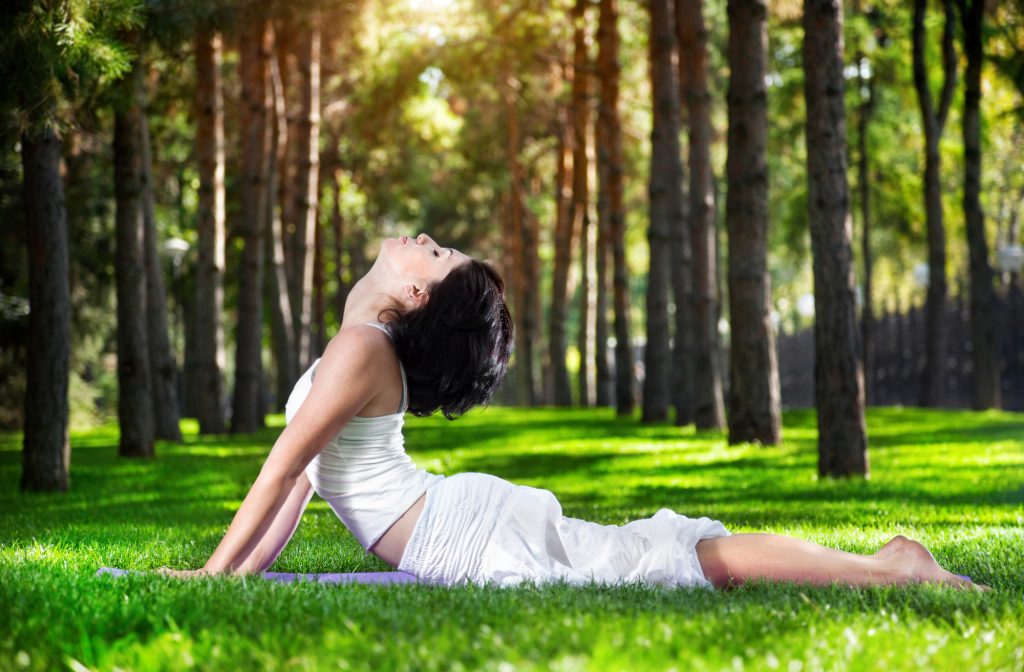Bhujangasana: the yoga posture of the snake

In Sanskrit Bhujangasana, the posture of the snake, has its own special meaning. Bhujanga means snake and asana, posture. Just as the difference between vaccine and poison is in dosage, the same applies to yoga postures.
The snake posture, in special, is one of the 32 postures considered essential by Gheranda Samhita traditional text composed in the 17th century.
Sneaky as the animal itself, Bhujangasana is seemingly easy and it hides the perception of the risks she offers, and on the other hand, those who know about the risks, tend to fear this yoga posture.
Therefore, it is common to see excesses in both directions, going beyond what is due or not exploiting enough this posture.
The right measure of fit varies from person to person which calls for personalized guidance. However, it is possible to contribute with some specific observations that can help everyone to do this in an appropriate way.
Bhujangasana: instructions to do this yoga posture with care
- Not having a specific orientation, choose to have excessive care, better not to fully explore the posture than to be injured.
- Lie on your stomach with your forehead on the rug and place your hands under your shoulders with pointing fingers pointed forward.
- Pay close attention with the lumbar spine as you enter the posture, to protect it to direct the consciousness to that region and to maintain the tone of the active abdomen, the belly is slightly retracted.
- Attention with the fists, do not put the weight only in them; distribute it on the palm of the hand and fingers.
- By inhaling, raise your bust as much as possible, stretching your arms in a controlled manner. The basin remains on the floor and the glutes and thighs are slightly contracted.
- Also, note the elbows, it is not necessary to stretch them fully, in most cases it is preferable to leave them slightly flexed.
- Notice the shoulders for them to remain open without approaching the ears.
- Attention also with the cervical, the region of the neck, do not exaggerate when taking the head back.
- Conserve posture as long as it is comfortable by keeping the abdomen in place with the attention directed towards the spine and throat.

Bhujangasana: effects of its practice
The regular practice of Bhujangasana
- Contributes to relax and realign the spine, minimizing postural deviations such as scoliosis and kyphosis;
- Strengthens arms, trapezius, and shoulders;
- Extends the depth of the breath;
- Stimulates the organs of the digestive, reproductive and urinary systems especially the kidneys;
- Tones the ovaries and uterus and contributes to relieving menstrual and gynaecological disorders;
- Stimulates the energy flow in the heart and throat region, balancing the anahata and the visshuddha chakra;
- Improves, with it, the humor and the self-confidence, being a great ally in the management of the stress;
Bhujangasana: contraindications
- People with herniated discs need extremely specific guidance to do Bhujangasana, and it is preferable not to do so if they do not have qualified supervision;
- Those who have hyperlordosis should also redouble their care by performing this asana;
- Likewise, anyone who suffers from carpal tunnel syndrome;
- Do not perform in case of peptic ulcer and recent surgery in the abdominal region;
- Women should avoid this posture during pregnancy.
You may also like:
- 11 Yoga asanas to relieve shoulder pain
- 5 indispensable floor asanas for your yoga practice
- Yoga poses: know some of them
- Pranayama: improve your vital energy
- Pranayama progression: how to improve your breathing with yoga

